#latin canada
Explore tagged Tumblr posts
Text
youtube
Latin Fall Fiesta at Yonge Dundas Square in Toronto, Canada (Urdu/ Hindi vlog)
LATIN FALL FIESTA 2024 Experience the energy and vibrant culture of the biggest Hispanic/Latin American event in Canada! Over two incredible days, the Latin Fall Fiesta brought together thousands of people to celebrate the rich traditions and contributions of the Hispanic-Latino-Canadian community.
Featuring live music, lively dance performances, unique handicrafts, delicious food, and captivating folklore, this colorful event showcased the true essence of Latin American roots.
Hosted at the iconic Yonge-Dundas Square in downtown Toronto, the event was a true spectacle of art, culture, and community spirit. I hope you enjoy this glimpse into the fiesta, and don’t forget to leave your thoughts in the comments!
Whether you're a local or a visitor, my vlogs offer a fresh perspective on Toronto's vibrant urban landscape. Therefore, subscribe to my channel for more exciting vlogs showcasing the best of Toronto and beyond.
And again, if you enjoyed watching this video, please don't forget to like and comment leave your feedback. Thanks for watching! 🌷🌆🚶♂️
#uglyandtraveling#travel vlog#travel blogger#travel around the world#travel channel#travel backpack#travel#ugly and traveling#ugly & traveling#traveling vlog#latin parade and fall fiesta#yonge dundas square#yonge dundas square toronto#toronto canada#toronto downtown#latin parade#latin fall festival#latin parade and fall fiesta toronto#Latin Parade and Fall Fiesta at Yonge Dundas Square#Latin Parade and Fall Fiesta Yonge Dundas Square#toronto festival#toronto festival 2024#latin canada#latin toronto#latin music#latin festival toronto#latin festival#latin dance#latin dance music#Latin Fall Fiesta
2 notes
·
View notes
Text

Nights
#gay#gay men#gay shower#gayboy#gayhot#gayman#gay bulge#gay pride#gay tumblr#gay handsome#gay bulto#gay briefs#gay blog#gay twink#gay twunk#gay canada#gay bear#gay art#gay pics#gay onlyfans#gay mexican#gay latino#gay latin men#gay penis
261 notes
·
View notes
Text

Chin
#fypage#meme#funny#funny meme xd#fyp#latino#español#latin girls#fypツ#artists on tumblr#brasil#my post#icons#peru#chile#canada#mexico#uruguay#latinoamérica#argentina#guatemala#honduras#personal#hello kitty
80 notes
·
View notes
Text
Mexico : " Esto es tu culpa."
America : " I know , I know."
Canada : " You speak spanish ?"
America : " No.I just know the phrase " this is all your fault " in every language they speak. "
#source : Shadowhunters#incorrect quotes#hetalia axis powers#aph hetalia#hetalia#axis powers hetalia#hetalia oc#latin hetalia#hetalia fandom#hws hetalia#hetalia america#hetalia usa#hws america#aph america#hetalia mexico#hetalia canada#hws canada#aph canada#incorrect hetalia quotes#aph mexico#hws mexico#latin hetalia mexico
212 notes
·
View notes
Photo




Tessa Virtue and Scott Moir skating their original dance at the 2007 Canadian National Championships and, with a different flower, at the 2007 World Championships. Their music was Luis Bacalov's Assassination Tango.
(Sources: 1 and 2)
#Tessa Virtue#Scott Moir#Virtue Moir#Figure skating#Ice dance#Luis Bacalov#Assassination Tango#Building the Bullet#Fringe#Flower#Latin#Tango#Canada#2006–2007#2007 Canadian Nationals#2007 Worlds#Such a great program#I miss them terribly
93 notes
·
View notes
Text

99 notes
·
View notes
Text

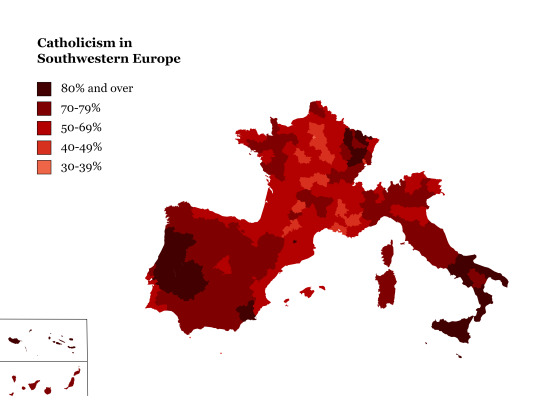

Catholicism (practicing & non-practicing) in North America, Southwest Europe, United Kingdom, and Ireland
#map#maps#cartography#usa#mexico#latin america#data#americas#europe#geography#catholicism#catholic#cathblr#uk#ireland#irish#spain#cuba#canada#france#italy#christian#christblr#christianity
167 notes
·
View notes
Text
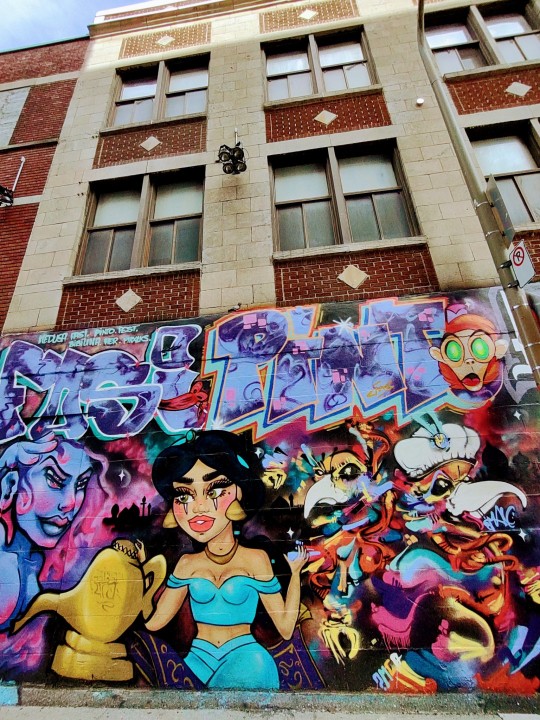
705
#montreal street art#cityphotography#photography#quartier latin#mtl#quebec#canada#original photography#original photography on tumblr#montreal#mtlphoto#original photographers#montreal street photography#original photographs#my photos#streetart#streetphoto#streets#street art#artists on tumblr#street photography#montrealgraffiti#montréal#graffittiart#graffiti#downtown#urban photography#city photography#art#pic of the day
22 notes
·
View notes
Text

In Canada, ludum ludimus quem vocamus “Sumne in Via”
In Canada, we play a game called “Am I on the Road”
(Versio Anglica.)
#Canada#snow#winter#latin#latin language#latin translation#lingua latina#latin fandom#latin meme#latin memes#meme#Am I on the Road#driving#car#cars
74 notes
·
View notes
Text
Whoever said "There are no stupid questions" never met the guy who asked me if Brazil was in Africa...
...And followed it up with "South America? Where's that?"
We... We were in North America...
#brazil#africa#lol#facepalm#stupid questions#i'm just saying#south america#latin america#countries#geography#north america#canada#the real life of me
69 notes
·
View notes
Text
No. 7 - A jetBlue FaMintly ReBluenion - The Quest for the Bluest Plane
And now, for something completely different.
We're done with jetBlue. I said that and I meant it. But we're not done with this train of thought. This post might not be what you expect. This is a very long post (and I do mean very long), a journey through the history of the US low-cost airline, the cognitive dissonance of the everyman millionaire, the thinly-veiled cynicism of the start-up airline, human kindness squeezed through cracks of a soulless machine which can never stop churning, and above all one man's quest to make the bluest planes he can, and my quest to tell you all if they look bad or not.
Let's begin here: have you ever wondered how new airlines are started? Well, when a wealthy individual or group of individuals love making money very much, they get together and incorporate a publicly traded company, lease a few airplanes, buy some airport slots...
I'll get to the point. Readers, there's somebody I'd like you to meet.

"Never speak to me or my daughter ever again." image: Rick Maiman
This is David G. Neeleman. He's jetBlue's dad. And jetBlue...has siblings.
David Neeleman is a Brazilian-American-Cypriot businessman I would best describe as a serial airline founder. Normally the description 'serial entrepreneur', to me at least, implies flakiness and perpetual failure to get anything properly off the ground, but that's not the case for Neeleman. He's very successful. He's probably some sort of pioneer. I've seen him compared to Howard Hughes. There's really only one stain on his record, one failure to speak of, and it's been over ten years. He has a net worth of 400 million dollars.
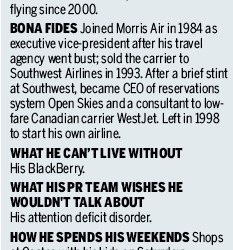
image: bloomberg
He's an...interesting person. Very interesting. He was born in Brazil and raised in Utah by a wealthy Mormon family. There are many very funny images of him available through Google. He has ten children, an ADHD diagnosis, no university degree, a whole lot of money, and a weird, weird, weird personal philosophy.
This interview is hard to sum up, but there's clearly a lot going on here. This is a guy who wants so desperately to be down to earth and kind and generous, who thinks he is down to earth and kind and generous, but who just can't take the extra step to realize the implications of the truly obscene wealth involved in venture capital and the inherent contradiction of that with his own ostensible charity and drive towards a fair and comfortable experience for passengers. In a way he seems like he's just too wealthy to really understand what being wealthy means. (It's also an older interview, and I imagine any scrap of genuine convictions he held through cognitive dissonance are now long-gone, given the CoViD thing.) He's also clearly got a chip on his shoulder about being fired from jetBlue. To be fair, having seen what they've done with their livery...I get it.
What else...he's also been CEO of airline booking program Open Skies, was involved with bizjet charter airline Superior Air Charter (then known as JetSuite), is founder and chairman of security company Vizgul for some reason, and is a minority owner of TAP Air Portugal. His nephew Zach Wilson is quarterback for the New York Jets. Oh, and he funded a study to underestimate the prevalence of CoViD. Classy, David. Real classy.
This isn't about David Neeleman. Not really. Not yet, at least. At some point it becomes about him, about his journey, but even then it isn't. When you have 400 million dollars you cease to become a meaningful subject as a person and become a meaningful subject as a distilled effigy of the things which the money came from. I dislike the Tony-Starkification of real people and I refuse to approach him in a way that supports that view of him. His life only matters to me in the context of the airlines he makes, and in what the way he changed over time represents. There's at least one biography out there for anyone particularly interested in the lives of Mormon multimillionaires who take issue with making people die less because they want the line to go up more. He is worth 400 million dollars, which is roughly a million dollars times what I make in one paycheck, delivered every two weeks. He's a creature in a suit who owns an absurd amount of wristwatches, each of which could pay for some sort of surgery for someone out there. There's a bunch of those in the world and this one happens to have made something which eclipses him, and that something is what's been occupying me since Wednesday.
If you're a book-reader - and I recommend being one - I think you're probably better off reading Barbara S. Peterson's "Blue Streak: Inside jetBlue, the Upstart That Rocked an Industry", which talks specifically about jetBlue and the way it pioneered what we now consider normal for aviation in the US. Reading it brought back memories for me of seeing adverts for jetBlue's planes on television, guaranteed to have a TV screen on every seat, and having my little mind which was still scarred by hours upon hours of complete boredom flying all the way from Tokyo to the American Northeast completely blown. Air travel really is unrecognizable from what it was when I was a child, although 20 years feels a lot shorter than it really is when you've lived it. There was no one factor that changed aviation so much in my lifetime, but there were a lot that contributed. ETOPS, 9/11, the recession, geopolitics, gas prices, the internet, legacy airline mega-mergers, privatization...and the jetBlue way of doing things.
It's easy to forget from our current vantage point but low-cost air travel wasn't always like this. Southwest did a lot to pioneer the modern low-cost model but jetBlue is probably the second-biggest player in the airline industry's shift to a culture which tries less to be glamorous and tries more to be fun and approachable (they by no means invented the Fun Airline, but PSA had been gone for 20 years at that point and the market had a gaping hole). They were a huge player in the rise of in-flight entertainment as standard even on low-cost flights. They helped keep aviation going after 9/11, when it was one of the few airlines to actually make money. And jetBlue's story isn't Neeleman's story, even though he founded it. I literally just listed four other major involvements of his, and he hasn't been involved in the business side of jetBlue since 2008. His story involves the founding of four - count em! - other airlines. Let's take a look through them and see if we can spot any patterns.
Morris Air (1992-1994)

sources and further reading: [1] [2] [3] [4] [5] [6] [7] [8] [9] [10] [11] [12] [13]
Never heard of Morris Air? Can't blame you. jetBlue's oldest sibling existed for two years in the 90s. Two years. That's pretty miserable. ValuJet was around for twice that. That said, you're actually probably more familiar with them under a different name: Southwest.
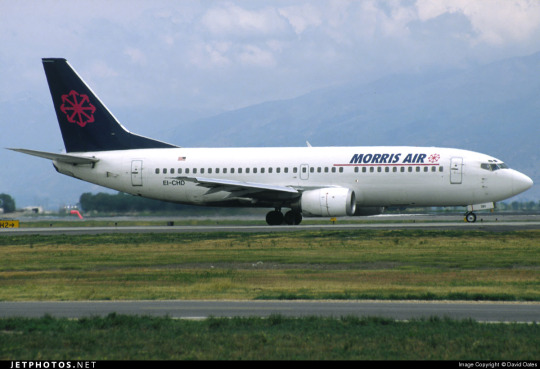
No, Morris Air did not become Southwest. Southwest existed at the time, and it was in fact Southwest which gave birth to Morris Air.
Morris Air was named for its founder, June Morris, who operated one of Utah's largest travel agencies. In 1984 she partnered with a then 25-year-old David Neeleman to launch Morris Air Service. The two had realized something that was about to shake the airline industry: plane tickets were really expensive, and you could charge even less than major budget carriers like Southwest by just buying all the seats on a charter flight and selling them on to customers at an attractively low price. If you did this, even regular working-class people trying to book a trip to Hawai'i or Disneyland could actually afford a plane ticket. This worked successfully, enough that Morris sold off her travel agency, until they incurred a large fine from the DoT for pushing too far and fraudulently passing themselves off as a scheduled airline (which mattered because commercial charters are operated under Part 135 regulations while scheduled services are governed by the much more restrictive Part 121). In response, girlboss queen June Morris and her investie David Neeleman went and started up Morris Air as an actual, genuine, fully certified part 121 carrier, making June Morris the only female jet airline CEO in the US. They operated a fleet of 21 737-300s around the west coast on both scheduled and charter flights, pioneering such cost-cutting measures as e-tickets (wrongly attributed to Southwest, they were actually first used by Morris). This fleet included N75356/N764MA/N697SW, the airframe involved in the TACA 110 incident, which was successfully landed on a levee after losing power in both engines.

image: Richard Silagi
Now, I don't know about you, but these planes don't scream 'vacation' to me. In fact, they don't scream anything. They barely whisper. They breathe lightly on my ear. There are a couple planes in their fleet with weird features, like multicolor painted noses or cheatlines, but these seem to be one-offs and I wouldn't even be surprised if they were just leftovers from previous paintjobs (the one with the cheatline does look suspiciously like the one used on Sierra Pacific planes, one of the operators Morris chartered from). So they don't count. What counts is this.
Maybe if Morris Air didn't want to be instantly forgotten they shouldn't have made their planes completely generic. I'm not sure they cared, though. They wanted to make money and they made money.
A D- for Morris Air.
In 1992, less than two years after gaining its air operator's certificate, Morris Air merged with Southwest and the brand was retired. Despite having posed a legitimate threat to the titan that was Southwest at the peak of its relevance, it's since largely been forgotten. June Morris and David Neeleman both worked in Southwest's upper management for some time, but it was only five months before Neeleman left Southwest for other ventures. Soon, something more familiar would spring up, fed by the dying rays of Morris Air's gargantuan profits.
WestJet (est. 1994, began operation 1996)

Not exactly a deep cut, is it? WestJet is actually the second largest carrier in Canada and the ninth-largest in North America. They carry over 25 million passengers a year. I've never been one of them, but David Neeleman probably has, because he was one of the group of absurdly wealthy individuals who founded this incredibly successful airline in 1994.

WestJet operates a primary fleet of over 100 Boeing 737s of various models and seven Boeing 787s; in the past they also operated the 757 and 767. They operate both scheduled passenger and charter flights, as well as having a cargo division, a fully-owned regional subsidiary, and a Delta Connection/United Express-style brand name under which Pacific Coastal Airlines operates.
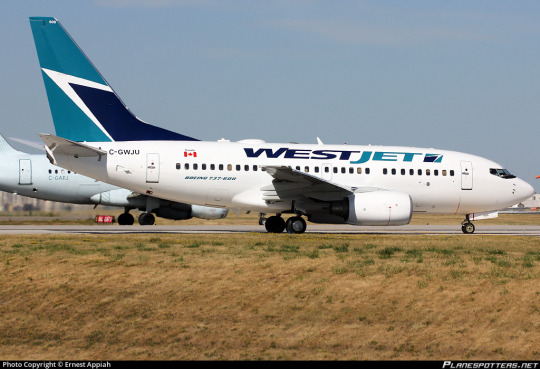
These all use more or less the same livery, which has only slightly changed since the beginning of operations in 1996. Pictured above is the original livery. I like the colors, I like the angularity on the tail, but I despise the style of livery with just the isolated tail colored in. This said, they introduced a new, updated livery in 2018.
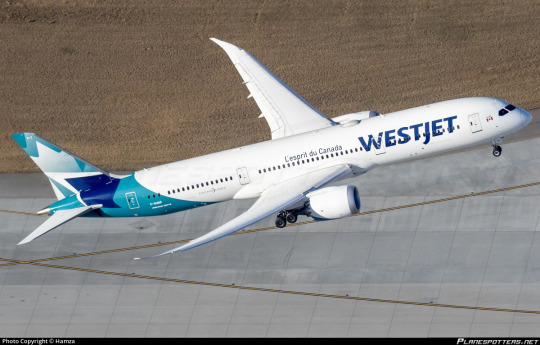
I am a very predictable person. Given a livery mostly seen on 737MAXes and Dreamliners, I will always pick the Dreamliner to use as a visual example. This is not a slight to the MAX. They are nice looking planes, but the Dreamliner's planform is just on another level. Look at that wing sweep. Immaculate.
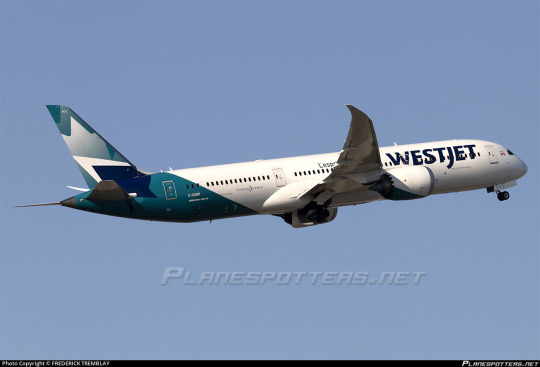
I like this color scheme a lot. I just happen to really like sea-green-adjacent colors, this is not the first time I've mentioned this. The font is nice, big, legible. I like the all-caps, I like the descender on the J. I think removing the logo mark on the wordmark and making it solid color was fine as a choice, makes the whole plane feel more balanced between the turquoise and the dark blue. The 'l'esprit du Canada' feels utterly pointless and is blocked by the wing and too small to be clearly read anyway. Tail design not limited to the tail, but mostly white fuselage regardless. Boring, but there's nothing here I can really call...bad? It's what they don't do that feels like the issue here, not what they do. Like, some sort of design on the nose and directly above or below, maybe? I didn't even realize there's any paint on the engines until I was editing my first draft and from most angles you just can't see it. Come on.
Grade: D+
Before I move on, there is something I have to mention. And that is WestJet's sub-brands. WestJet Encore is a fully-owned subsidiary which operates a respectable fleet of Bombardier Dash 8 Q400s, and WestJet Link is a brand name under which Pacific Coastal Airlines operates a couple Saab 340s. And that is...fine, normal, even, but...

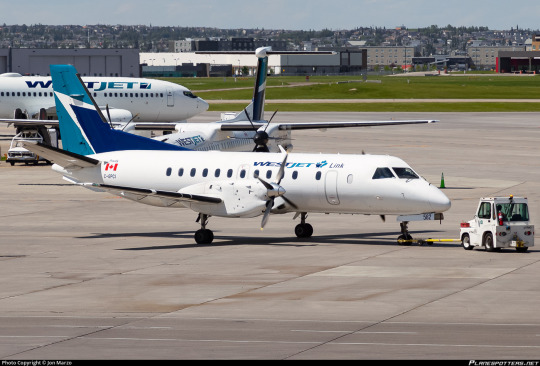
Is this a joke to you?!
Change your name to WestProp. Now.
...
Hey. Wait a minute.
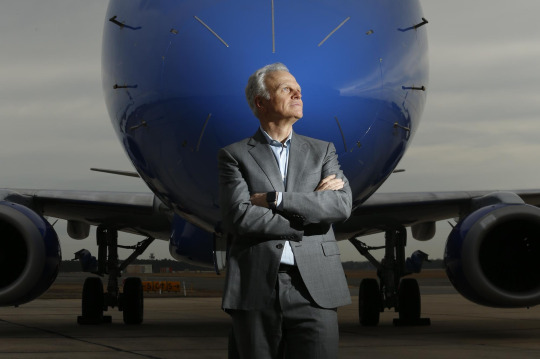
David! The large blue plane is coming! It has no engine power because it ran out of fuel and is about to hit you on the racetrack during family day! Oh no, he has airpods in! He can't hear us! image: Cean W Orrett
This guy. David Neeleman. Yeah, him. We were talking about him. I mean, it's been a minute since he came up because as far as I can tell after founding WestJet he did nothing of note related to it again, but...what's he been doing? Wait...wait a minute. This is becoming a habit, David. All your airlines are...well...they share a certain trait, in a very specific area.
David knows what I'm talking about. After all, his next move, in 1998, was to found NewAir, which would shortly become jetBlue.
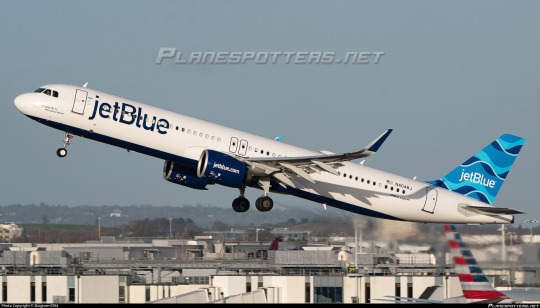
I have not stopped to count how many words I have written about jetBlue this week. It is a lot. I already delivered a verdict. We are moving on.
Because David didn't stop here. Why would he? It's 2008 and he just got fired from his own company because a winter storm went Southwest-holiday-scheduling levels of horrendous for the airline he raised from infancy. He's got time to kill and money to burn and he wants the line to go up, damn it! Well, maybe he can be in the right place at the right time again. Make a second jetBlue, win back what he's lost. After all, he's got something else up his sleeve - dual citizenship.

Just your regular average Mormon, lurking in forests with a model plane. Nothing sinister about that. image: conde nast traveler
I did mention earlier he was born in Brazil, right? That's always been part of his life. When he was in charge, jetBlue was actually the launch customer for the Embraer E190, an incredibly popular mid-sized regional jet made by Brazilian manufacturer Embraer.
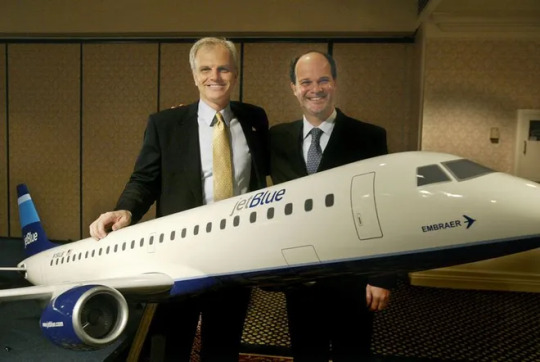
Is it just me, or do the men in this picture somehow look like cardboard cutouts holding a real airplane? There is something very strange about this image. I would go so far as to call it unsettling. image: The Gainesville Sun
So, figuring he'd bled the US dry, I suppose, he moseyed on down to his birthplace with his millions of dollars and presumably a couple little blank model planes waiting to be painted and shown off at a press conference. If you've seen a pattern emerging, prepare to see it continue.
Azul Linhas Aéreas Brasileiras (est. 2008)
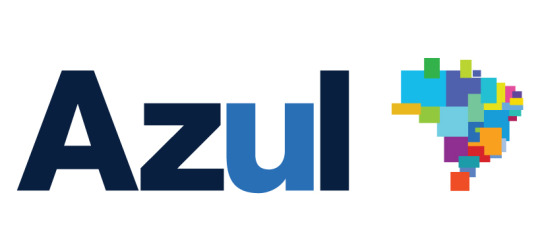
Mmm. Helvetica Neue Heavy. Not impressed.
Okay, sure. Technically there was a 'naming contest' and this name 'was the most popular'. But I think at this point I would believe that David Neeleman botted his own vote years before I would believe that Blue Airlines of Brazil just happened to be the winning name.
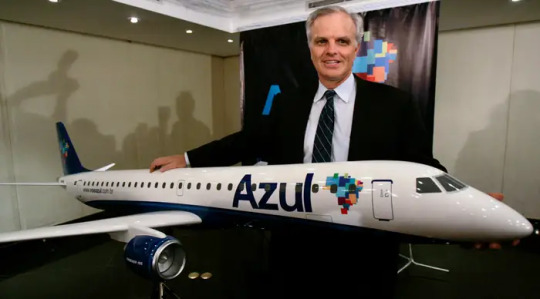
Okay, all else aside, I would really love to gently hold a plane like this. There's a certain caressing nature to the way he's holding this plane's snout which I crave to someday replicate with a similarly sized model aircraft. image: Paulo Whitaker
Much like jetBlue, Azul began operating Embraer 190 and Embraer 195 aircraft before expanding its fleet to include Airbus models, a handful of ATR 72 tubroprops, and two Boeing 747s for cargo. They started with just five aircraft but grew rapidly, absorbing a bunch of other airlines and securing large investments from the likes of United and Hainan Airlines. Today they operate a fleet of over 150 planes to 161 destinations and are the third largest airline in Brazil. They have a set of crossover liveries with freaking Disney. (I might review those sometime.) They also have a crossover livery with John Deere for some reason. You know, the tractor company. In 2020 TripAdvisor named them the world's best airline.
In addition to the name of the company, they also name their airplanes. I do not speak Portuguese, but thankfully a close friend, @ametri-e, does. I asked him if the names were silly puns like jetBlue's are, and I got this response:
some of these are puns but not particularly funny, some of them just have the word blue in them, and one was funny
So there you have it!
Unlike Morris, which no longer exists; WestJet, which he seems to have minimally contributed to past its founding; and jetBlue, which tossed him unceremoniously on the tarmac with his bags, he remains the chairman of Azul at time of writing.
I find myself briefly wondering if this is all an attempt to recapture his lost glory. Is jetBlue, larger even than the impressive heights Azul has reached, the one that got away? Is he now forced to go forward modeling his work in the image of that which he was robbed of, that which he can never go back to?
I don't know and I don't care. I care about if the livery looks good or not.

Well, I wasn't just going to leave the John Deere plane out. It's a bit underwhelming, though, isn't it?.
So Azul is pretty different from jetBlue at first glance. Mainly, it uses a much darker blue and has a logo to go with the wordmark - a cute little pixel Brazil that looks a bit like a heart to me because of the specific way it's drawn. Everything is scaled nicely so it looks pleasing on the turboprop and I think the dark underside and the way it curves around the ventral fairing actually looks really good with the ATR's airframe, which has a very pronounced ventral fairing relative to similarly-sized props. But, okay, let's look at a jet.

This...is not terrible. I really like the highlights on the trailing edges of the winglets and the end of the rudder, and bordering the deep blue belly. Not crazy about the Helvetica Neue still. Why doesn't the 'u' being cyan carry over to the actual livery? Also, Detached Tail Syndrome. In fact, although it has features beyond this which make a further discussion worth having, the basic layout is what I call the 'Deltalike' because that's the airline I associate with it despite them certainly not being the first to use it - detached tail, painted engines, painted underside that's large enough to see from the sides. It avoids a lot of pitfalls of the other popular archetype, that of the very tail-heavy (which WestJet fell into), but has its own loathesome features. All said, though, I do think Azul is one of the better takes on the Deltalike.
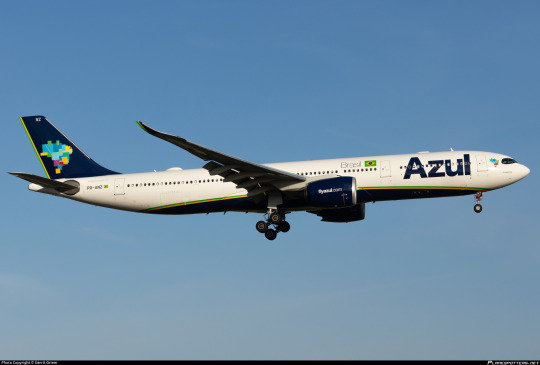
In the first picture the highlights look green, but in reality they're one line of green and one of yellow, for the Brazilian flag. I think they look really nice with this particular blue color, but I am exhausted of this man naming his airlines blue and then having the planes be majority white. They have such a nice shade of blue here, couldn't they make that the primary color of the body?
That aside, the way that the line curves up towards the middle of the plane combined with the tailing-edge highlights creates a sort of aerodynamic feeling. You even see them in other colors sometimes, like the pink ones on the E190s and blue ones on the E195.

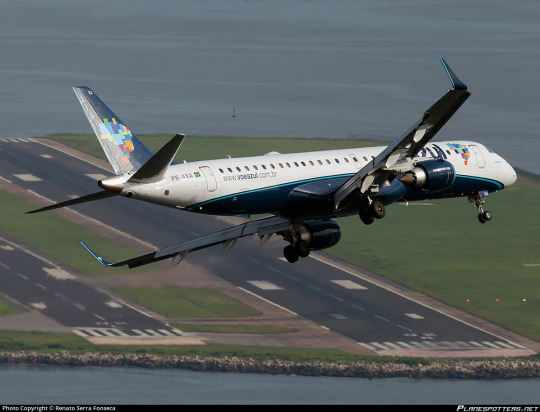

It also comes in pink! Were this not a one-off I would ask them to change their name to Rosa Linhas Aéreas Brasileiras, but it is a promotion.
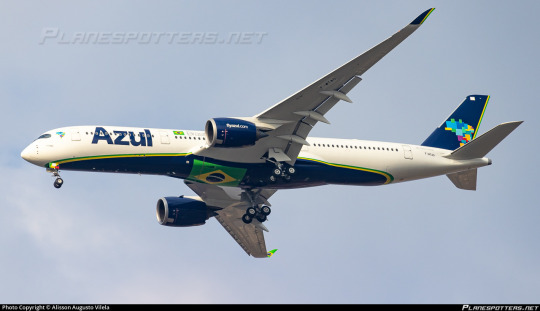
It seems like reconnecting with his origin has given David Neeleman the creative push he needed to beat jetBlue in at least one way - livery. All said, Azul Linhas Aéreas Brasileiras clocks in at a final grade of...
C+
Aww, not quite a B for Brazil. Better luck next time! Though I'll admit I considered putting it there for a bit. This is a very high C+. Still, no cigar. Next time try putting less white on the plane. If you're all about blue, why are all your planes still so white? Come on, David. You are spreading blue paint on every airline you've ever touched but never letting it get past the tailfin. Who are you kidding? You know you're holding yourself back. There's a desire deep in you. You know it's there. I know you want to. It's just a matter of when. You are going to give in to your most animal urges. This isn't enough for you.
You need a bluer plane.
You can feel the thirst for a plane blue enough that you might as well own a piece of the sky straining against the bonds you've tried so hard to impose on it all these years. When will you finally unleash it?
Breeze Airways (commenced operations 2021)

image: inc. usa
Here we are, David. Time has almost caught up to us. It's just you, me narrating, and a very, very blue plane indeed. We have finally reached jetBlue's youngest baby sibling.
"Together, we created Breeze as a new airline merging technology with kindness," David Neeleman said. "If you can just be nice, the people will be nice to you in return and your job will be more fun.”
This is an interesting pitch. When Cape Air, with its fleet of tiny airplanes and its founder who started the airline with himself as pilot just to fly one route that he found himself needing to travel regularly, makes their motto Make Our Customers Happy And Have A Good Time Doing It (Mocha Hagodti), it feels...well, it feels like the person who said that didn't understand yet what a company was. Cape Air is its own story with its own contradictions and the vicious cognitive dissonance of capital on stark display but you can sense the desire in its inception to provide a service before running a company. It is the opposite of cynical - it is naïve. It is hopeful and human and starry-eyed.
When a man on his fifth airline makes a pitch like that it's like trying to cloud-watch looking at the ceiling.
That's not the only pitch for Breeze. I mean, even if you've started four successful airlines already and it seems like everything you touch goes on to revolutionize some part of the industry I think that would be a hard sell to investors in 2021. There's a bit more going on here. I'm going to start with the bit that's boring and makes me roll my eyes.
Ever since JetBlue, Neeleman has, like the kid peering into the circus tent, longed to get back into the U.S. airline industry.
Bill Saporito writes for Inc. USA. I let out one tepid physical laugh. Yeah, David. You've got something great going in Brazil right now, but you want more. You want jetBlue and you can't have it. So instead...you give us an app.
The Breeze app is designed to eliminate chokepoints between passengers and planes. That means fewer people on the ground and lower cost.
Is this revolutionary? Is this destined to end in a Southwest-tier scheduling catastrophe? I'm not sure. I think David Neeleman's history suggests he could make this work, and I think the history of apps being used for things that didn't have apps before suggests that this could horribly blow up in his face. It seems to have gone fine so far, as I haven't heard anything else about it. To be fair, I wasn't exactly invested in the idea, so I haven't been looking. There's always time for some situation to happen nobody had foreseen and it all to go belly-up. Saying you never cancel flights works fine until a blizzard hits and then you have to start all over again, but he didn't build jetBlue by being afraid to take risks.
More interesting is the service they offer. Breeze has a bit of an identity crisis. Breeze wants to be an ultra low cost carrier with a first class cabin. That sounds contradictory because it is. The ULCC model as used by airlines like Ryanair and Spirit fundamentally relies on charging a low fare upfront with the expectation that customers will not receive a crumb extra without paying for it. Everything from seat reservations to snacks to anything else you can think of, you can pay extra for or you can do without. Breeze also follows other trends common with ULCCs, like a lack of seatback screens (the very thing jetBlue pioneered!) and flying point-to-point to smaller airports located outside of major metropolitan areas rather than routing through hubs. Yet Breeze insists it wants to have a first class cabin!
It does have a first class cabin, apparently. The classes are called Nice, Nicer, and Nicest. I wish airlines wouldn't do this. Air travel is the floorboards of stand-up comedy. Everyone already hates flying except weirdoes like me who spend enough time looking at pictures of airplanes to write reviews of their paint jobs, and even I get pretty tired of it if I go too long sitting there without the plane doing some sort of plane thing. You can be honest. You can call the classes Bearable, Unpleasant, and Painful. We all understand. It's okay. I would rather buy a ticket for Miserable But Cheap class than Nice. It probably won't actually be that bad, since Breeze doesn't do long-haul, which makes the presence of first-class even more bizarre. If you want first-class short-haul and have that sort of money just charter a private jet! And David Neeleman has been involved with at least two private jet charter companies too, so...what is he doing?
In 2011, almost exactly 10 years before Breeze began operation, Neeleman was interviewed for Business Jet Traveler. I linked the interview above. It's a powerful display of the cognitive dissonance of a man who considers himself a regular everyday Mormon dad, who donates his salary to his employees, who insists on calling his employees crewmembers, even as the line goes up, and up, and up. I've heard anecdotes about him sitting in the backs of his own planes at jetBlue, observing what he could change to make the experience better for the cabin crew and passengers, noticing a lot of those things could even save money, and I have no reason to disbelieve them.
As the head of a company he is by necessity exploiting those under him, as a businessman he is providing a service not from altruism but because he knows that people need it enough they'll give him money, and the more comfortable the experience for both the less likely he'll lose their labor and their money. Conscious or not, altruism is a means to an end, but it is still startling surrounded by airlines which don't even go that far. 'Nice' as a name for economy class is a pretty good summary of the man David Neeleman was, and the one he still tries to present himself as. But there's a specific question, and a specific answer, which I feel the need to place here.
The airlines have been cutting back on frills and first class, which is driving more people to business aviation. Do they need to find ways to treat their high-end customers better? Well, JetBlue doesn't have first class. We treated everyone the same. Maybe it's funny I'm in the JetSuite market because it's so weird to me that on a plane with 150 seats, you give 12 people a great ride and you stick it to 138-squish them all back there because of 12 people. There's something about that that just feels wrong.
Does it still feel wrong, David? Did something change about you between the first million and the 400th? When did this transformation happen? Was it the Ship of Theseus effect? Or...was this what you inevitably were working towards all along? Was it a fool's errand to pretend that there is a difference between what you do and what you are? Aviation is not immune to the society which it is built to serve - it is shaped by it. It feels wrong for 12 people to have a nice ride while 138 are squished in the back, but if you think about the life that 5 million Americans live and the life the other 326 million have to live, all squished back there so the lucky few can have a nice ride, doesn't it feel a little less wrong? After all, you've got the reclining bed. You can just pull the curtain closed. You've probably known what you were all along.
The airlines are a tough business. Why start another after JetBlue? Well, I've done this three times. It's what I know. I've always made money at it, always been successful. I figured out a formula that works and Brazil really needed it. And I had this idealistic view of trying to make a difference. I've got 3,000 people in Brazil that work for us and love their jobs and we flew four million people this year and a lot of those people had never flown before.
Air travel is life-changing. It's not just for those of us who stand outside airports and take a picture of every airplane we see. It is a faster, safer, easier way of getting people and things from one place to another. There are people who live in the remotest places in the world, who deal with mountains and oceans and even just being so far away from anywhere else. They can travel now, and they can do more than that. They can visit their family. They can get places even if they're somewhere railroads don't run to. Cargo planes bring these remote communities necessities. They take their children to university and its sick to lifesaving treatment. It's a lifeline and a fundamental part of infrastructure. Once we invented it we stopped being able to go back.
It isn't an inherently cynical thing to start an airline - not more cynical than starting any other company, anyway. At least, it shouldn't be. But I think it's an inherently cynical thing to start five. To have your position at Azul, which is both massively successful and your own brainchild, which you think is doing good...and to say to yourself "I need more. I need America. I need what I was robbed of when I lost jetBlue."
Very few people have ever started one airline successfully. David Neeleman started four and sat at the helm of Brazil's third-largest airline and decided it wasn't enough for him. He's always made low-cost airlines. To a not-insignificant degree he made the low-cost airline what it is today. But he needs a first-class cabin.
The Inc. piece on Breeze continues to discuss the airline's planned operations. In 2011 Neeleman's employees were crewmembers.
Breeze is also introducing a program in which it will hire college interns from Utah Valley University and mold them into customer-service machines. In exchange for salary, free tuition, and housing, the students will undergo training and then work 15 or so days a month while taking their college courses online. "The big thing is we are going to provide a great service with kind people on a beautiful airplane with a fun atmosphere," says DePastino.
In 2021 they are customer-service machines. They will spend not just their days but their nights in Breeze's living spaces at one of the most vulnerable times in a person's life, learning how to be cogs in a machine right when they're transitioning from being students to entering the turbulent world of trying to find a job. And all of us want a job that makes us feel like we're still us, doing something that makes the world better and that helps us touch the tip of Maslow's pyramid. Almost none of us get it. Most of us slog through something utterly pointless that is entirely separate from our own self-identity to just keep our heads above water. Breeze turns this into a machine and it starts its cogs young.
Would I take this deal if it was offered to me? I'm a university student with barely enough money to keep myself afloat in a very expensive city while paying for university and for medicine and for anything else that may suddenly come up. I love aviation. I have customer service experience. I work in customer service right now and will probably continue to for a long time. I would hypothetically be an ideal candidate for this sort of program. Would I take this offer knowing that nobody, myself included, says to themself as a child that they want to be an airline customer service representative when they grow up? College is supposed to be the place you lay the groundwork for trying to start a career. Nobody wants their career to be 'customer service representative'. Nobody wants their obituary to say 'beloved son, husband, middle management at an airline's call center'. Sure, lots of people end up there, and plenty of them are happy and fulfilled and they have nothing to be ashamed of, but nobody's 18, going into college, and thinks that's what they want to live and breathe for years. They want to intern in the accounting departments, to shadow engineers, to see the sleek jets and peer in on the lifestyles of the people who built this. They want to be David Neeleman. But that's not an option for most of us.
So what would I do? Live this concession to the inevitability of automation which overtakes much more than the flight deck? I might, because at least it's a guarantee of shelter and stability that I don't have trying to stumble my way through an utterly shambolic job market caught between the price of school and the need to earn that money and the costs inherent to autoimmune disease and the number of hours there are in a week. I want to write, or even just to do something that involves words, because even a data entry job might let me pretend I'm still the person I thought I would grow up to be, and even that seems off the table. But it's one thing to know your dreams are never going to be realistic and another to say it out loud and yet another to commit to it in a place that even refers to you outright as a machine as if they don't understand the weight of that word when you provide someone's lodging and pay and everything else they rely on. This is a few steps short of being a company town populated exclusively by the young and vulnerable who think they're going to be entrepreneurs one day.
"When I started JetBlue, it was a customer service company that just happened to fly airplanes," Neeleman says. "Breeze is a technology company that just happens to fly airplanes."
He was talking about the app when he said this, but I think it comes through in a broader sense. jetBlue was a customer service company. Humans interfaced with humans. The idea was in nature lively, giving names to inanimate flying machines. It was a corporation, it made money, it did not actually care about people and it could not because it was not itself human, but it did not wear this fact proudly. It was a regrettable necessity of running an airline, and the CEO donated his salary to the employees. jetBlue under Neeleman and beyond clung to the human element, and to kindness and to making low-cost flight fun and comfortable even though there was nobody on the plane with a first-class ticket. You might be part of a fundamentally unethical system known for cutting corners and lying and sweetheart deals and never suffering consequences when something as simple as a jackscrew nobody lubricated kills 88 people, but you're going to at least try to dampen that impact. It might kill you just as dead but it can hurt less, maybe so much you never realize jetBlue occupies the same slice of the world as Pan Am and as ValuJet.
Breeze Airways lodges young individuals and molds them into machines. It is an ultra-low-cost carrier with a first class cabin. It presents a scenario where people are optimally herded by an app, served by employees who go home at night to the same place they work, and all of it can be reduced down to numbers so easily. It takes the human and it makes it technology. It makes it profit. The human element is gone. It doesn't matter how much it hurts you because if you aren't a person there's nothing to kill. It says the quiet parts out loud and makes you get on the phone and tell your family you're happy here with a gun to your head. It is a machine built of anonymized mannequins who, irrelevant to their role in it, happen to be alive, and it calmly tells you that this is a good thing, and that is a threat. The lowest category of experience you can have is 'nice'. Breeze Airways does not name their planes.
When I was a child I thought airlines were people and airplanes. I've flown many times in my life. There aren't many other ways to get from Japan to the East Coast these days. The world is huge but we can see it all so easily, assuming taking us there can make someone money. I remember being eight and having the pilot standing by the door to greet passengers, having him hand me a little pair of plastic pilot wings I still have now. I remember the stormy night I flew alone for the first time and the stewardess who let me sit next to her for a little bit and answered all my questions about the noises the plane was making. I remember the first time I flew on a propeller plane and the pilot who explained to me what all the gauges meant, and who insisted there was nothing to be afraid of and pointed out all the landmarks we flew past, who clearly knew this route by heart.
That's not what aviation always is. That's not what it usually is. People don't usually start airlines because they wish they could fly everyone around in their little single-engine plane on a commuter route from Boston to Provincetown, from Hyannis to Nantucket, provide that service to the people who don't have a plane and a license of their own, but they just can't do it all themselves. People who start airlines aren't usually intrepid pilots searching for new heights to push themselves to or flight instructors looking to fly people around in a single rented DC-3. They're businessmen. They want money. Juan Trippe was a businessman. Howard Hughes was a businessman.
The corporation is where passion goes to die if it existed to begin with. They build machines to suck the life out of pilots, exhaust them, put them in planes that are falling apart and let them take the blame when they fail to do things they failed to teach them. These people aren't your friends and they don't care about aviation, and if they do it's in the way an American child plays soldiers at the same time a school in Syria is being bombed. They're usually not even pilots. They're people with a lot of money who want even more money. jetBlue isn't unique in that sense and neither is Breeze. One just says it a lot louder.
Sometimes an airline is a technology company that happens to fly airplanes. That's true. Every single positive experience you have is with people, not airlines. I've never once spoken to jetBlue, just a matrix of pilots and flight attendants and customer service representatives who make up its many limbs. Maybe it should come as a relief, a sort of coming clean, that Breeze is tearing back the curtain and reminding you that the time a stewardess calmed you down during turbulence isn't really any different from the time a drugstore cashier let you off even though you were a few cents short of your total and said they'd take care of it. It's not CVS doing that. It's always people.
So many businessmen say they're here to do good, to make the world a better place, to reconcile kindness with venture capital. Any of them could build a tower that reaches all the way to the edge of the solar system and let us all know how many beautiful things there are that we can reach if they can find a profitable way to get us out there, and yet it's still the people who see your transit card is out of money and scan you in using theirs that make me remember that we are capable of kindness despite our surroundings. It is up to all of us whether we wish to be kind or not and it's not something anyone else can build for us.
Companies can't build a kinder, softer, funner, more human place. They can make money. They can provide a service. A service you need, at a cost you can afford, predicated on the fundamental question: whether they think you can make them money. Desperation, need, giving people a non-choice, that's how you make money and kill criticism. That isn't kindness. That's finding a gap in the market. Always has been.
I read that at JetBlue, you also didn't have your own parking spot and you donated your entire salary to a crewmember crisis fund, saying, "It seemed hoggish of me to have all this stuff when others didn't because every time I would get something someone else would have less." Yet then I read about your $14 million mansion in Connecticut. It's my wife's mansion. I never would have built that, ever. I think she's repentant. It was a project for her and it kind of got out of hand. But we all felt funny moving in. That's why we want to sell it.
I'd wondered how you reconciled the mansion with your philosophy. I don't.

image: Bill Bernstein
Okay, Marx or Megatron or whoever you think you are, that's enough of that depressing schlock. You are a tumblr.com airline livery review blog. We're here to answer if the plane looks good or not.
It's not like Neeleman's only goals are money and vapid personal satisfaction. We've been with him from the start. It was just an unacknowledged bit of the tail. He probably didn't notice it at first, but we did, with the gift of hindsight. It germinated. It took root. It grew. It became identity. It became his white whale. Are the planes blue, though?

Well, everyone, meet N206BZ. She's an Airbus A220-300. She's just a year and a half old and was delivered brand-new to Breeze Airways. She doesn't have a name, just a registration, but that's sure one blue plane if I've ever seen one!
The color scheme is visually pleasing. It's all over but it keeps visual interest with the darker tail and rear fuselage, the darker engines, the big white check-mark that serves as an instantly recognizable emblem for the airline. The repetition of it on the winglets is a nice touch.
I hate the wordmark, honestly. The text feels like it's located too low, the lightest blue blends in with the main fuselage until it borders on illegible. As far as I can tell, the typeface is custom. I hate it. It's ugly. The text is bad and it weighs down the rest of the plane.

A lot of how a livery looks depends on the lighting. So let's look at another example. I'd like to introduce you to N140BZ. She's an Embraer E195-200 and she's coming up on 15 but she hasn't slowed down any. She flew for Air Europa for a long time, but from 2016 on she was in limbo, all sorts of holding groups leasing her to each other but nobody putting her into service. Now she's with Breeze. They'll retire their E190s somewhat soon, but for the moment they like to have them. It allows them to operate shorter routes and free up time for charters on other days, just to maximize productivity. She doesn't have a name either. I'd say she still looks pretty blue. A lot of the concept art has a very metallic and reflective feel which I'm glad isn't as present in the actual planes, because it looked a bit sci-fi movie and not in a campy way. It was very blue chalk marker.
I like these colors just as much in this sort of washed-out environment as I do in direct sunlight gleaming at full intensity. Maybe more, even, since the text of the wordmark is so much more legible now and you can even see that the checkmark itself is blue. There's almost nothing on this plane that isn't blue. The only thing not blue about this airplane is that she doesn't have a name to revel in it.
The Breeze livery gets a B-.
It is a competently executed version of the thing it wants to be. There's visual interest. There are choices made. It's more than a logo slapped on a tail and sent off to sit on the tarmac with hundreds of other primarily white airplanes. I like it, I think this is the best Neeleman livery. It's also the bluest.
I find myself thinking the checkmark is an apt logo. Azul wore the shape of Brazil - a country full of people. Azul Linhas Aéreas Brasileiras S/A is a company. It cannot have a soul. But its founder says it does. He wants to make something better for people. Breeze Airways is a checkmark. It satisfies a need. It is 'nice' but there is no pretense that it is people.
The pilots will be kind all the same, and the stewardesses. People will agree to swap seats so families aren't separated. People will compliment strangers' outfits and help the person in line in front of them who's fifty cents short for a bottle of water. We will hold the door for elderly men with canes and exhausted women with strollers. We will take every little chance we can to be kind. We do this because we are people, and not because of where we work, and it's definitely not the people with 400 million dollars to put down on a shiny new airline making that happen. Everything is scheduled through an app, minimizing contact with humans even as the ones we do talk to are 'molded into customer-service machines' over the course of years. N140BZ wears her blue colors well, and not having a name doesn't make her any uglier. So what is it that's changed?
David Neeleman can't make jetBlue a second time. But he doesn't know that. To a man with so much, maybe it makes sense how he could fail to realize that. When you're high enough in the air a thriving uptown and an area of condemned slums look more or less the same, just little blocks of color all the way down there. He doesn't even realize he's given up the ghost. This is only a tragedy if your definition of a happy ending was us believing someone is better than they are instead of being left no room to continue failing to recognize what money is and what money does. The corporation wears two masks - the mask that it wears when it is a corporation wearing a mask, and the mask it wears when it is so close to human that you mistake it for your friend. The businessman wears these masks too. To be sad they've taken them off is to invest more in the virtue of these men than they ever do in the life or death of the 138 people squeezed in the back.
There it is. Two decades, five attempts, the bluest plane. If you've kept reading all the way to the end let me know in the replies what your favorite Neeleman-proximate livery is. I'll see you all tomorrow for our regularly scheduled Runway Runway livery review, and I hope you all have a wonderful night.
#tarmac fashion week#grade: c+#grade: b-#grade: d-#grade: d+#neelemanverse#region: north america#region: latin america#region: united states#region: canada#region: brazil#era: 1990s#era: 2000s#era: 2010s#era: 2020s#azul linhas aéreas#westjet#morris air#breeze airways#runwayrunway blueses it#compilations#long haul#charter airlines#leisure airlines#low cost carriers#ultra low cost carriers#defunct airlines#lufthansa declined#deltalike
77 notes
·
View notes
Photo

Largest Latin American Ancestry in Canada and the US
147 notes
·
View notes
Text
A pet peeve of mine is how the internet at large and a lot of countries took to using the term baby boomer for a generation wordlwide like it wasn't in a niche demographic of countries that in summary fought in ww2, got an economic boost and started making tons of babies
#just from memory that demographic was exclusively from US Canada and maybe the UK I might be missing a couple but still#the privilege associated with the whole generation isn't as clear cut as the term would make us believe#why does the US get to name generations anyway?#like the rest of the countries that fought there were in shambles and stuff#and latin america wasn't much better off though it had other problems going on as well
11 notes
·
View notes
Text
"Canada’s push to exploit Ecuador’s natural resources, despite Indigenous-led resistance and national instability, fits the broader pattern of Canadian engagement with Latin America, especially in the context of the government’s Critical Minerals Strategy and the new Cold War with China.
Ninety per cent of the world’s rare earths production is located in China, which also controls the expensive processing and refining of these minerals — key links in the production chains of high-tech manufacturing and the defence industries in the U.S. and its allies around the world."
#canada#montreal canadiens#canadian#exploitation#exploitative#ecuador#natural resources#indigenous#latin america#cold war#china#earth#world#usa news#usa politics#usa#american indian#american#america#ausgov#politas#auspol#tasgov#taspol#australia#fuck neoliberals#neoliberal capitalism#anthony albanese#albanese government#gold
12 notes
·
View notes
Text
anyways fuck argentina and most importantly fuck the referee we've still got third to play for 🩷
#davies going for xrays after a nasty foul vs kone getting a card for de paul's oscar consideration dpmo 🩷#yes its latin american footy yes its more intense but ite obvious when one team is being called for their aggression more than another#it was always canada vs everyone else and canada vs everyone else it shall remain. third has maple leafs all over it#disclaimer i knew we werent going to win i am just genuinely appaled at the refreeeing in favour of argentina hope this helps#argie mutuals unfollow me if you want lmfao sorry not sorry your team makes me angry and has since the exposure of their racism#which happened LESS THAN TWO WEEKS after i got into footy. by the way.
8 notes
·
View notes
Text

I had an inspired drawing of a rol, but I finally finished it! (Not fullcolor but it is finished as far as it goes)
...
Someone was more happy than worried about his bitten arm and the possibility of having been infected with rabies! ₍ᐢ. .ᐢ₎
#hetalia#oc#aph mexico#hws mexico#latin hetalia#aph canada#hws canada#matthew williams#canmex#mexcan
26 notes
·
View notes